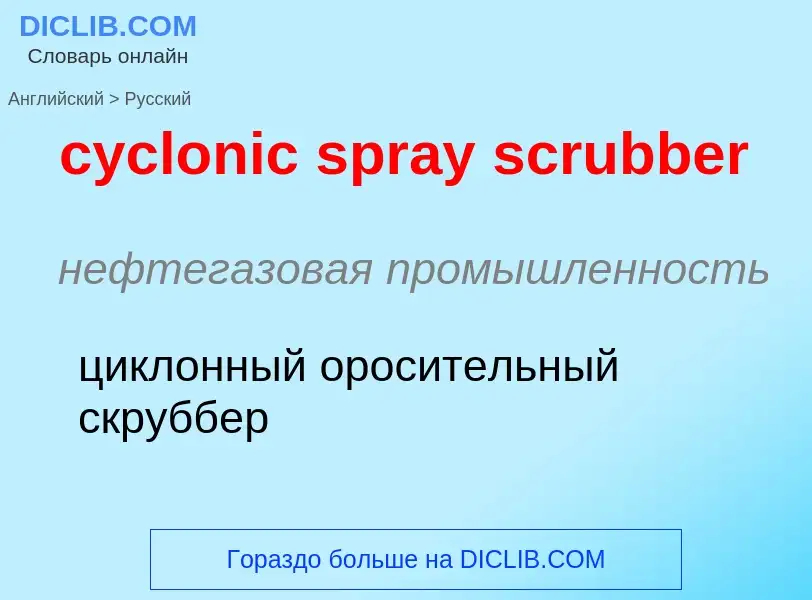Translation and analysis of words by ChatGPT artificial intelligence
On this page you can get a detailed analysis of a word or phrase, produced by the best artificial intelligence technology to date:
- how the word is used
- frequency of use
- it is used more often in oral or written speech
- word translation options
- usage examples (several phrases with translation)
- etymology
cyclonic spray scrubber - translation to russian
нефтегазовая промышленность
циклонный оросительный скруббер
['e(ə)rəsɔlbɔm]
общая лексика
аэрозольная бомба (баллон с аэрозолем для обработки полей)
Definition
Wikipedia

Cyclonic spray scrubbers are an air pollution control technology. They use the features of both the dry cyclone and the spray chamber to remove pollutants from gas streams.
Generally, the inlet gas enters the chamber tangentially, swirls through the chamber in a corkscrew motion, and exits. At the same time, liquid is sprayed inside the chamber. As the gas swirls around the chamber, pollutants are removed when they impact on liquid droplets, are thrown to the walls, and washed back down and out.
Cyclonic scrubbers are generally low- to medium-energy devices, with pressure drops of 4 to 25 cm (1.5 to 10 in) of water. Commercially available designs include the irrigated cyclone scrubber and the cyclonic spray scrubber.
In the irrigated cyclone (Figure 1), the inlet gas enters near the top of the scrubber into the water sprays. The gas is forced to swirl downward, then change directions, and return upward in a tighter spiral. The liquid droplets produced capture the pollutants, are eventually thrown to the side walls, and carried out of the collector. The "cleaned" gas leaves through the top of the chamber.
The cyclonic spray scrubber (Figure 2) forces the inlet gas up through the chamber from a bottom tangential entry. Liquid sprayed from nozzles on a center post (manifold) is directed toward the chamber walls and through the swirling gas. As in the irrigated cyclone, liquid captures the pollutant, is forced to the walls, and washes out. The "cleaned" gas continues upward, exiting through the straightening vanes at the top of the chamber.
This type of technology is a part of the group of air pollution controls collectively referred to as wet scrubbers.



